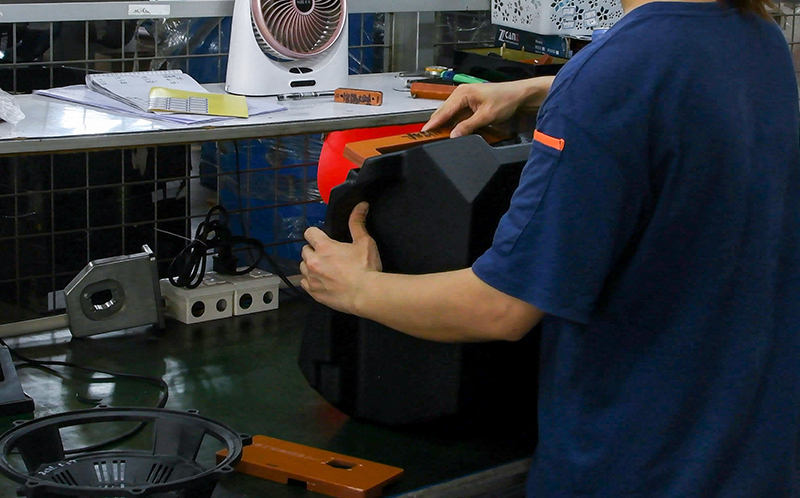What are the Common Methods for Inspection and Testing in Rotational Molding?
 Feb 09,2024
Feb 09,2024

What are the Common Methods for Inspection and Testing in Rotational Molding?
To ensure the quality and integrity of the final products, various inspection and testing methods are employed throughout the rotational molding process. This article discusses the common inspection and testing methods used in rotational molding. These methods help ensure the quality, durability, and functionality of rotomolded products, allowing rotational molding manufacturers to deliver reliable and high-performing plastic products.

1. Visual Inspection
Visual inspection is the first step in the quality control process. It involves a thorough examination of the product's surface for any visible defects, such as cracks, dents, or blemishes. The inspector checks the product's color, texture, and finish to ensure they meet the specified requirements. Any discrepancies or imperfections identified during the visual inspection are documented and addressed.
2. Dimensional Inspection
Dimensional inspection involves measuring the product's dimensions, such as length, width, height, and wall thickness, to ensure they conform to the design specifications. This is typically done using calipers, micrometers, or coordinate measuring machines (CMMs). Dimensional inspection is crucial for ensuring that the product will fit and function correctly in its intended application.
3. Material Testing
Material testing is performed to verify the physical and mechanical properties of the rotomolded product. Common tests include:
- Tensile Testing: Measures the material's ability to withstand tension or stretching without breaking.
- Impact Testing: Evaluates the material's resistance to sudden forces or shocks.
- Hardness Testing: Determines the material's resistance to indentation or scratching.
- Chemical Resistance Testing: Assesses the material's ability to withstand exposure to chemicals or corrosive substances.
These tests help ensure that the product will perform as expected under various conditions and environments.
4. Leak Testing
Leak testing is essential for products that must be watertight or leak-proof, such as tanks or containers. There are several methods for leak testing, including:
- Pressure Testing: Involves pressurizing the product and observing for any pressure drops that could indicate a leak.
- Vacuum Testing: Involves applying a vacuum to the product and checking for any changes in pressure that could suggest a leak.
- Immersion Testing: Involves submerging the product in water and looking for bubbles or changes in water level that could indicate a leak.
Leak testing ensures that the product will maintain its integrity and functionality when exposed to liquids or gases.
5. Performance Testing
Performance testing involves subjecting the product to conditions similar to those it will encounter in use. This helps assess its durability, reliability, and overall performance. Examples of performance testing include:
- Cycle Testing: Involves repeatedly opening and closing a container or applying a force to a part to simulate use over time.
- Temperature Testing: Involves exposing the product to extreme temperatures to evaluate its thermal stability and resistance to heat or cold.
Performance testing helps ensure that the product will meet the demands of its intended application and provide long-lasting performance.
6. Environmental Testing
Environmental testing is performed to evaluate the product's performance under various environmental conditions. This may include exposure to extreme temperatures, UV radiation, chemicals, or humidity. Environmental testing helps ensure the product's durability and reliability in different operating conditions.
By using these methods, Light Venus is able to identify and address any potential issues, ensuring that the rotomolded products meet the exact specifications. We invite you to browse our rotational molding factory.
 Tel: 0086-13632687993
Tel: 0086-13632687993  Email: roto@lightvenus.com
Email: roto@lightvenus.com

 Home
Home What are the Main Parameters for Setting Up Rotomolding Process?
What are the Main Parameters for Setting Up Rotomolding Process?  You May Also Like
You May Also Like



 Tel
Tel
 Email
Email
 Address
Address








